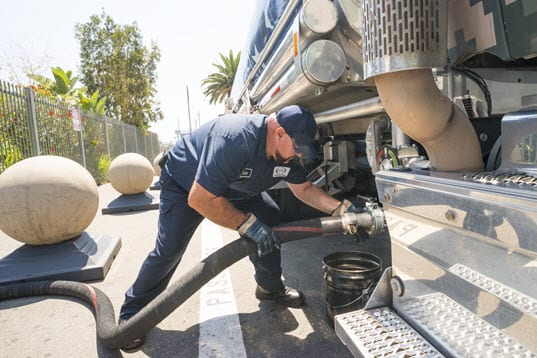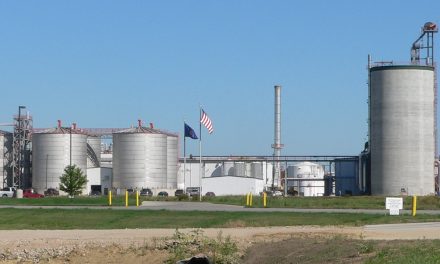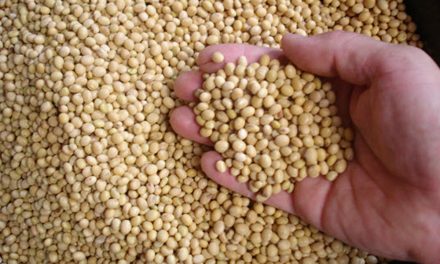By Troy Shoen
A dozen years since ultra-low sulfur diesel (ULSD) started being phased into on-road diesel usage in the United States, the move has proved to be a good thing for the environment. Less sulfur means less harmful emissions in the air.
But the shift to ULSD has not come without some undesirable side effects for diesel vehicles. Chief among them is the loss of lubricity. Sulfur, which is a chemical element, is what gives petroleum diesel its lubricating properties. With ULSD, petroleum diesel has significantly less of the component that helped with lubricity. As a result, many fleets are spending money on lubricity additives or seeing increased wear on their engines. But there is another answer.
Biodiesel has great lubricity characteristics. And biodiesel can be easily blended with petroleum diesel. Adding as little as 2 percent biodiesel (a B2 blend) provides the necessary lubricity required in the fuel—and higher blends help add even more lubrication.
The Importance of Lubricity
From 2006 to 2010, the U.S. Environmental Protection Agency (EPA) phased in ULSD for on-road diesel. Since 2010, all diesel fuel sold in the U.S. must be ULSD. The goal is to reduce emissions—ULSD allows for the engines to be fitted with improved pollution control systems that can be damaged by sulfur, according to the U.S. Department of Energy. Low sulfur diesel could have up to 500 parts per million (ppm). ULSD allows for just 15 ppm. That’s a 97 percent reduction.
While the reduced sulfur is good for the environment, it’s also a 97 percent reduction in the element that gives petroleum diesel its lubricating properties. And lubricity is critical to fleet performance because it helps protect the engine from damage. More specifically, diesel fuel lubricates the fuel injection system, which includes the fuel pump and injectors. These are moving parts with extremely tight tolerances and in order to withstand the high pressures and temperatures they’re exposed to, they need a lubricating agent to help prevent unnecessary wear and damage.
Without enough lubrication, parts will generate excess heat when they rub together, causing pitting (wear scars) and will start to break down. Adding a lubricity agent helps reduce friction between parts, which lessens the impact of the moving parts.
Fleets Turn to Additives
In the absence of sulfur, diesel fuel must get its lubricity from elsewhere. ASTM D975, the fuel specification for diesel, has a lubricity requirement on diesel fuel. The test is performed on a High-Frequency Reciprocating Rig (HFRR), which ultimately gives a wear scar of a fuel. ASTM requires diesel to have a wear scar of less than 520 microns. Diesel without a lubricity additive (or biodiesel) generally does not meet this limit, so an additive is needed.
Lubricity additives are not allowed in the pipeline, so they must be added downstream of the pipe. Most of the time, it is added at the terminal when a customer picks up their fuel, just like other additives. Sometimes, however, a company may want to use a specific additive package that they put in their fuel later. So, it is very common for a fleet to have lubricity additive in their fuel—whether they know it or not. That also means that one way or another, they are paying for that additive.
How Biodiesel Helps
Unlike petroleum diesel, biodiesel does not rely on sulfur for lubrication. Instead, it’s the oxygen in biodiesel that gives the fuel its lubricity characteristics. (It also gives biodiesel a higher Cetane number and aids in more complete combustion compared with petroleum diesel.) And biodiesel doesn’t just do an adequate job at lubricating engines—it excels. A 2007 study found that a B2 blend outperformed 18 other products on the market when it came to lubricity.
The use of biodiesel can eliminate the need for lubricity additives. In fact, a B2 blend supplies the amount of lubricity needed to meet the ASTM D975 spec. Using higher blends of biodiesel—as many fleets are increasingly doing, including up to B20—aids in the lubrication process even more.
Reducing wear is not the only benefit. A lubricating agent like biodiesel also helps an engine run smoother and quieter by reducing the friction caused by coating metal parts. The temperature of the lubricated part of the engine is also cooler because of the lack of heat buildup due to friction. Lubrication also helps to preserve the longevity of the engine—meaning the fleet can get more miles out of the vehicle. This can be through less maintenance downtime or even a longer engine life.
Biodiesel is easy for fleets to add to their operations. No vehicle or infrastructure modifications are required. Some fleets blend biodiesel with petroleum diesel themselves, and some buy blended fuel from their supplier.
Lower Emissions Too
Also, let’s consider the primary reason ULSD exists: to reduce harmful emissions. Biodiesel outperforms it here, too. Biodiesel offers significant reductions in greenhouse gas and engine head emissions. A B20 blend reduces particulate matter by 18 percent, total hydrocarbons by 11 percent and carbon monoxide by 4 percent compared with ULSD.
So, not only does biodiesel do a better job at lubrication, it’s also better for the environment than ULSD.
 Troy Shoen is senior manager, marketing, at REG. Headquartered in Ames, Iowa, REG is an international producer of biomass-based diesel, including biodiesel and renewable diesel, and is North America’s largest producer of advanced biofuel. Contact Troy at 515-239-8166 or [email protected]. For more information about REG, visit regi.com.
Troy Shoen is senior manager, marketing, at REG. Headquartered in Ames, Iowa, REG is an international producer of biomass-based diesel, including biodiesel and renewable diesel, and is North America’s largest producer of advanced biofuel. Contact Troy at 515-239-8166 or [email protected]. For more information about REG, visit regi.com.










